1mg
Showing 101–150 of 582 results
-
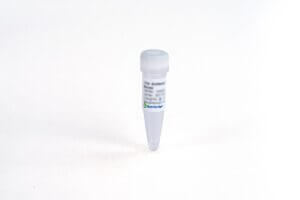
CRP (5D2), mAb, Mouse
$73.87 Add to cart View Product DetailsC-reactive protein (CRP) is synthesized in the liver by macrophage. Its level in blood increases when inflammation occurs. CRP serves as a useful marker for diagnosis of inflammation. High-sensitivity C-reactive protein (hsCRP), can serve as a risk marker for the diagnosis of myocardial infarction, ischemic stroke, peripheral vascular disease. Measuring hsCRP in blood is helpful to provide positive treatment of the disease.
-

CTLA-4 Fc Chimera, Human
$560.63 Add to cart View Product DetailsCytotoxic T lymphocyte-associated molecule-4 (CTLA-4) is a cell surface molecule that is closely related to CD28, and a powerful negative regulator of T cell activation. Structurally, CTLA-4 is a member of the Ig superfamily, having a single extracellular V-like domain , homology with CD28; The overall sequence homology between CD28 and CTLA-4 is about 20%, but they share a 27% (murine) to 31% (human) identity at the amino acid level. Inhibitory receptor acting as a major negative regulator of T-cell responses. The affinity of CTLA-4 for its natural B7 family ligands, CD80 and CD86, is considerably stronger than the affinity of their cognate stimulatory coreceptor CD28.
-
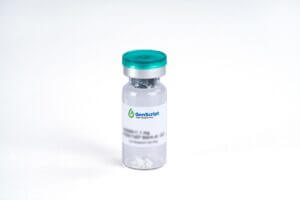
CTLA-4 Fc Chimera, Mouse
$560.63 Add to cart View Product DetailsCTLA-4 (Cytotoxic T-Lymphocyte Antigen 4) is also known as CD152, is an Inhibitory receptor acting as a major negative regulator of T-cell responses. CTLA-4 is a member of the immunoglobulin superfamily, which is expressed on the surface of T cells and transmits an inhibitory signal to T cells. CTLA-4 and CD28 are homologous receptors expressed by both CD4+ and CD8+ T cells, which mediate opposing functions in T-cell activation. Both receptors share a pair of ligands expressed on the surface of antigen-presenting cells (APCs). The affinity of CTLA-4 for its natural B7 family ligands, CD80 and CD86, is considerably stronger than the affinity of their cognate stimulatory co-receptor CD28.
-

cTnI (24E40HC)
$139.73 Add to cart View Product DetailsCardiac Troponin I (cTnI) is synthesized in cardiac muscle and forms a structural complex with Troponin T and C. Its concentration in blood increases after the onset of chest pain and maintains peak for a couple of weeks. The cTnI protein is considered as useful diagnosis marker for acute myocardial infarction (AMI).
-

cTnI (32CD), mAb, Mouse
$139.73 Add to cart View Product DetailsCardiac Troponin I (cTnI) is synthesized in cardiac muscle and forms a structural complex with Troponin T and C. Its concentration in blood increases after the onset of chest pain and maintains peak for a couple of weeks. The cTnI protein is considered as useful diagnosis marker for acute myocardial infarction (AMI).
-

cTnI (5C7), mAb, Mouse
$139.73 Add to cart View Product DetailsCardiac Troponin I (cTnI) is synthesized in cardiac muscle and forms a structural complex with Troponin T and C. Its concentration in blood increases after the onset of chest pain and maintains peak for a couple of weeks. The cTnI protein is considered as useful diagnosis marker for acute myocardial infarction (AMI).
-

cTnI (5C7HC)
$139.73 Add to cart View Product DetailsCardiac Troponin I (cTnI) is synthesized in cardiac muscle and forms a structural complex with Troponin T and C. Its concentration in blood increases after the onset of chest pain and maintains peak for a couple of weeks. The cTnI protein is considered as useful diagnosis marker for acute myocardial infarction (AMI).
-

cTnI (6D11), mAb, Mouse
$139.73 Add to cart View Product DetailsCardiac Troponin I (cTnI) is synthesized in cardiac muscle and forms a structural complex with Troponin T and C. Its concentration in blood increases after the onset of chest pain and maintains peak for a couple of weeks. The cTnI protein is considered as useful diagnosis marker for acute myocardial infarction (AMI).
-

cTnT (25C11), mAb, Mouse
$144.04 Add to cart View Product DetailsCardiac TnT (cTnT) is the largest subunit of the troponin complex which is composed of cTnT, troponin I (TnI), troponin C (TnC). It is encoded by the TNNT2 gene with a calculated molecular weight of 34.6 kDa. The cTnT is considered as a useful biomarker for the diagnosis of acute myocardial infarction.
-

cTnT (26D7), mAb, Mouse
$144.04 Add to cart View Product DetailsCardiac TnT (cTnT) is the largest subunit of the troponin complex which is composed of cTnT, troponin I (TnI), troponin C (TnC). It is encoded by the TNNT2 gene with a calculated molecular weight of 34.6 kDa. The cTnT is considered as a useful biomarker for the diagnosis of acute myocardial infarction.
-

CXCL10, Mouse
$2,238.19 Add to cart View Product DetailsCXCL10 also known as IP-10 is belonging to the CXC chemokine family. It is encoded by the CXCL10 gene, and in murine it is also named the CRG-2 gene. The gene was originally identified as an immediate early gene induced in response to macrophage activation. This chemokine elicits its effects by binding to the cell surface chemokine receptor CXCR3. CXCL10 has been shown to be a chemoattractant for activated T-lymphocytes and monocytes/macrophages. It also has other roles, such as promotion of T cell adhesion to endothelial cells, and inhibition of bone marrow colony formation and angiogenesis. Murine CXCL10 shares approximately 67 % amino acid sequence identity with human CXCL10.
-

CXCL11, Human
$2,238.19 Add to cart View Product DetailsCXCL11 also known as I-TAC is belonging to the CXC chemokine family and shares 36 % and 37 % amino acid sequence homology with IP-10 and MIG, respectively. It is highly expressed in peripheral blood leukocytes, pancreas and liver. Expression of CXCL11 is strongly induced by IFN-γ and IFN-β, and weakly induced by IFN-α. This chemokine elicits its effects by binding to the cell surface chemokine receptor CXCR3, which with a higher affinity than do the other chemokines for this receptor, CXCL9 and CXCL10. Similar to CXCL10, CXCL11 has been shown to be a chemoattractant for IL-2-activated T-lymphocytes, but not for isolated T-cells, neutrophils or monocytes.
-

D-dimer (15C18), mAb, Mouse
$104.36 Add to cart View Product DetailsD-dimer known as a fibrin degradation product, is presented in blood after a blood clot is degraded by fibrinolysis. Its concentration in blood increases when deep venous thrombosis (DVT), pulmonary embolism (PE) or disseminated intravascular coagulation (DIC) happens. It serves as a useful maker for the diagnosis of these diseases.
-

D-dimer (16D25), mAb, Mouse
$104.36 Add to cart View Product DetailsD-dimer known as a fibrin degradation product, is presented in blood after a blood clot is degraded by fibrinolysis. Its concentration in blood increases when deep venous thrombosis (DVT), pulmonary embolism (PE) or disseminated intravascular coagulation (DIC) happens. It serves as a useful maker for the diagnosis of these diseases.
-

D-dimer (18D4), mAb, Mouse
$104.36 Add to cart View Product DetailsD-dimer known as a fibrin degradation product, is presented in blood after a blood clot is degraded by fibrinolysis. Its concentration in blood increases when deep venous thrombosis (DVT), pulmonary embolism (PE) or disseminated intravascular coagulation (DIC) happens. It serves as a useful maker for the diagnosis of these diseases.
-

D-dimer (1F3), mAb, Mouse
$104.36 Add to cart View Product DetailsD-dimer known as a fibrin degradation product, is presented in blood after a blood clot is degraded by fibrinolysis. Its concentration in blood increases when deep venous thrombosis (DVT), pulmonary embolism (PE) or disseminated intravascular coagulation (DIC) happens. It serves as a useful maker for the diagnosis of these diseases.
-
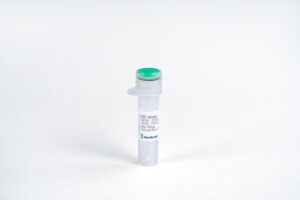
DKK-1, Human
$1,423.13 Add to cart View Product DetailsDickkopf related protein 1 (DKK-1) is a chemokine that belongs to the DKK protein family, which also includes DKK-2, DKK-3 and DKK-4. DKK-1 was originally identified as a Xenopus head forming molecule that behaves as an antagonist for Wnt signaling. It is one of the most up-regulated genes during androgen-potentiated balding, with DKK-1 messenger RNA up-regulated a few hours after DHT treatment of hair follicles at the dermal papilla in vitro. Neutralizing bodies against DKK-1 reverses DHT effects on outer root sheath keratinocytes. DKK-1 expression is attenuated by L-threonate, a metabolite of ascorbate in vitro. DKK-1 promotes LRP6 internalization and degradation as it forms a ternary complex with the cell surface receptor Kremen. DKK-1 not only functions as a head inducer during development, but also regulates joint remodeling and bone formation, which indicate sits role in the pathogenesis of rheumatoid arthritis and multiple myeloma.
-

DKK-1, Mouse
$2,264.06 Add to cart View Product DetailsDickkopf related protein 1 (DKK-1) is a chemokine that belongs to the DKK protein family, which also includes DKK-2, DKK-3 and DKK-4. DKK-1 was originally identified as a Xenopus head forming molecule that behaves as an antagonist for Wnt signaling. It is one of the most up-regulated genes during androgen-potentiated balding, with DKK-1 messenger RNA up-regulated a few hours after DHT treatment of hair follicles at the dermal papilla in vitro. Neutralizing bodies against DKK-1 reverses DHT effects on outer root sheath keratinocytes. DKK-1 expression is attenuated by L-threonate, a metabolite of ascorbate in vitro. DKK-1 promotes LRP6 internalization and degradation as it forms a ternary complex with the cell surface receptor Kremen. DKK-1 not only functions in head formation during development, but also regulates joint remodeling and bone formation indicating its potential role in the pathogenesis of rheumatoid arthritis and multiple myeloma.
-

DNAM-1/CD226 Fc Chimera, Human
$1,035.00 Add to cart View Product DetailsDNAM-1 (DNAX accessory molecule-1), also known as CD226, platelet and T cell activation antigen 1 (PTA1) and TLiSA1, is a member of the Ig superfamily containing two Ig-like domains of the V set and is encoded by a gene on human chromosome 18q22.3. DNAM-1 is an activating receptor expressed on natural killer (NK) cells, CD8+ T cells, and other immune cells. Upon recognition of its ligands, CD155 and CD112, DNAM-1 promotes NK cell–mediated elimination of transformed and virus-infected cells. It also has a key role in expansion and maintenance of virus-specific memory NK cells. DNAM-1 is the cell surface receptor of NECTIN2. Upon ligand binding, it stimulates T cell proliferation and cytokine production, including that of IL2, IL5, IL10, IL13 and IFNG.
-

EGF Fc Chimera, Human
$125.06 Add to cart View Product DetailsEpidermal Growth Factor (EGF) is a potent growth factor that stimulates the proliferation of various epidermal and epithelial cells. Additionally, EGF has been shown to inhibit gastric secretion, and to be involved in wound healing. EGF signals through the EGF receptor (EGFR) also known as erbB1, is a class I tyrosine kinase receptor. This receptor also binds with TGF-α and VGF (vaccinia virus growth factor). EGF-receptor binding results in cellular proliferation, differentiation, and survival. EGF is a low-molecular-weight polypeptide first purified from the mouse submandibular gland, but since then found in many human tissues including submandibular gland, parotid gland. Salivary EGF, which seems also regulated by dietary inorganic iodine, also plays an important physiological role in the maintenance of oro-esophageal and gastric tissue integrity. The biological effects of salivary EGF include healing of oral and gastroesophageal ulcers, inhibition of gastric acid secretion, stimulation of DNA synthesis as well as mucosal protection from intraluminal injurious factors such as gastric acid, bile acids, pepsin, and trypsin and to physical, chemical and bacterial agents.
-

EGF R, His, Human
$1,470.56 Add to cart View Product DetailsEGF Receptor, also known as ERBB, ERBB1 and HER1, is a type I transmembrane protein belonging to the tyrosine protein kinase family. It belongs to a family of tyrosine kinase receptors including Human EGF Receptors (HER) 2, 3, and 4 which all play important roles in cell growth and differentiation. Their primary ligands are EGF, Heparin-Binding EGF and Transforming Growth Factor α. Upon ligand binding, EGFR undergoes asymmetric dimerization, composed of an “activator” and a “receiver”. EGFR and its family members are disregulated in numerous cancers. In particular, EGFR is overexpressed in many epithelial solid tumors. Evidence suggests EGFR is an excellent target for pharmacologic intervention in Non Small Cell Lung Cancer (NSCLC) due to its high level of expression and prominent role in tumor growth and metastasis.
-
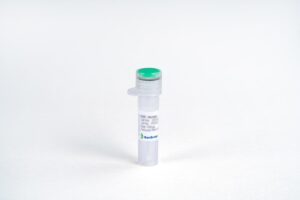
EGF, His, Human
$125.06 Add to cart View Product DetailsEpidermal Growth Factor (EGF) is a potent growth factor that stimulates the proliferation of various epidermal and epithelial cells. Additionally, EGF has been shown to inhibit gastric secretion, and to be involved in wound healing. EGF signals through the EGF receptor (EGFR) also known as erbB1, is a class I tyrosine kinase receptor. This receptor also binds with TGF-α and VGF (vaccinia virus growth factor). EGF-receptor binding results in cellular proliferation, differentiation, and survival. EGF is a low-molecular-weight polypeptide first purified from the mouse submandibular gland, but since then found in many human tissues including submandibular gland, parotid gland. Salivary EGF, which seems also regulated by dietary inorganic iodine, also plays an important physiological role in the maintenance of oro-esophageal and gastric tissue integrity. The biological effects of salivary EGF include healing of oral and gastroesophageal ulcers, inhibition of gastric acid secretion, stimulation of DNA synthesis as well as mucosal protection from intraluminal injurious factors such as gastric acid, bile acids, pepsin, and trypsin and to physical, chemical and bacterial agents.
-
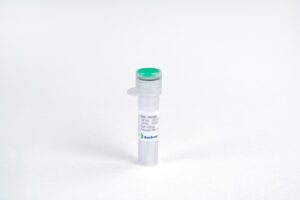
EGF, Human
$168.19 Add to cart View Product DetailsEpidermal Growth Factor (EGF) is a potent growth factor that stimulates the proliferation of various epidermal and epithelial cells. Additionally, EGF has been shown to inhibit gastric secretion, and to be involved in wound healing. EGF signals through the EGF receptor (EGFR) also known as erbB1, is a class I tyrosine kinase receptor. This receptor also binds with TGF-α and VGF (vaccinia virus growth factor). EGF-receptor binding results in cellular proliferation, differentiation, and survival. EGF is a low-molecular-weight polypeptide first purified from the mouse submandibular gland, but since then found in many human tissues including submandibular gland, parotid gland. Salivary EGF, which seems also regulated by dietary inorganic iodine, also plays an important physiological role in the maintenance of oro-esophageal and gastric tissue integrity. The biological effects of salivary EGF include healing of oral and gastroesophageal ulcers, inhibition of gastric acid secretion, stimulation of DNA synthesis as well as mucosal protection from intraluminal injurious factors such as gastric acid, bile acids, pepsin, and trypsin and to physical, chemical and bacterial agents.
-

EGF, Human
$86.25 Add to cart View Product DetailsEpidermal Growth Factor (EGF) is a potent growth factor that stimulates the proliferation of various epidermal and epithelial cells. Additionally, EGF has been shown to inhibit gastric secretion, and to be involved in wound healing. EGF signals through the EGF receptor (EGFR) also known as erbB1, is a class I tyrosine kinase receptor. This receptor also binds with TGF-α and VGF (vaccinia virus growth factor). EGF-receptor binding results in cellular proliferation, differentiation, and survival. EGF is a low-molecular-weight polypeptide first purified from the mouse submandibular gland, but since then found in many human tissues including submandibular gland, parotid gland. Salivary EGF, which seems also regulated by dietary inorganic iodine, also plays an important physiological role in the maintenance of oro-esophageal and gastric tissue integrity. The biological effects of salivary EGF include healing of oral and gastroesophageal ulcers, inhibition of gastric acid secretion, stimulation of DNA synthesis as well as mucosal protection from intraluminal injurious factors such as gastric acid, bile acids, pepsin, and trypsin and to physical, chemical and bacterial agents.
-

EGF, Mouse
$224.25 Add to cart View Product DetailsEpidermal Growth Factor (EGF) is a potent growth factor that stimulates the proliferation of various epidermal and epithelial cells. Additionally, EGF has been shown to inhibit gastric secretion, and to be involved in wound healing. EGF signals through the EGF receptor (EGFR) also known as erbB1, is a class I tyrosine kinase receptor. This receptor also binds with TGF-α and VGF (vaccinia virus growth factor). EGF-receptor binding results in cellular proliferation, differentiation, and survival. EGF is a low-molecular-weight polypeptide first purified from the mouse submandibular gland, but since then found in many human tissues including submandibular gland, parotid gland. Salivary EGF, which seems also regulated by dietary inorganic iodine, also plays an important physiological role in the maintenance of oro-esophageal and gastric tissue integrity. The biological effects of salivary EGF include healing of oral and gastroesophageal ulcers, inhibition of gastric acid secretion, stimulation of DNA synthesis as well as mucosal protection from intraluminal injurious factors such as gastric acid, bile acids, pepsin, and trypsin and to physical, chemical and bacterial agents.
-

EGF, Rat
$836.63 Add to cart View Product DetailsEpidermal Growth Factor (EGF) was originally discovered in crude preparations of nerve growth factor prepared from mouse submaxillary glands as an activity that induced early eyelid opening, incisor eruption, hair growth inhibition, and stunting of growth when injected into newborn mice. It is prototypic of a family of growth factors that are derived from membrane-anchored precursors. All members of this family are characterized by the presence of at least one EGF structural unit (defined by the presence of a conserved 6 cysteine motif that forms three disulfide bonds) in their extracellular domain. EGF is initially synthesized as a 130 kDa precursor transmembrane protein containing 9 EGF units. The mature soluble EGF sequence corresponds to the EGF unit located proximal to the transmembrane domain. The membrane EGF precursor is capable of binding to the EGF receptor and was reported to be biologically active. Mature rat EGF shares 70 % a.a. sequence identity with mature human EGF.
-

EGF, Rat (CHO-expressed)
$521.81 Add to cart View Product DetailsEpidermal Growth Factor (EGF) is a potent growth factor that stimulates the proliferation of various epidermal and epithelial cells. Additionally, EGF has been shown to inhibit gastric secretion, and to be involved in wound healing. EGF signals through the EGF receptor (EGFR) also known as erbB1, is a class I tyrosine kinase receptor. This receptor also binds with TGF-α and VGF (vaccinia virus growth factor). EGF-receptor binding results in cellular proliferation, differentiation, and survival. EGF is a low-molecular-weight polypeptide first purified from the mouse submandibular gland, but since then found in many human tissues including submandibular gland, parotid gland. Salivary EGF, which seems also regulated by dietary inorganic iodine, also plays an important physiological role in the maintenance of oro-esophageal and gastric tissue integrity. The biological effects of salivary EGF include healing of oral and gastroesophageal ulcers, inhibition of gastric acid secretion, stimulation of DNA synthesis as well as mucosal protection from intraluminal injurious factors such as gastric acid, bile acids, pepsin, and trypsin and to physical, chemical and bacterial agents.
-
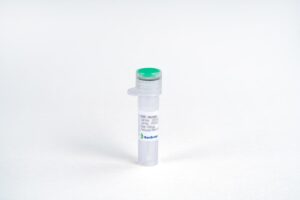
Enterokinase (EK), His, Lyophilized, Bovine
$664.13 Add to cart View Product DetailsEnterokinase (EK) is an enzyme produced by cells of the duodenum and involved in human digestion. It plays a role of turning trypsinogen to its active form trypsin, and indirectly activates the pancreatic digestive enzymes. Enterokinase is a specific protease that cleaves after a lysine preceded by four aspartic acids: Asp-Asp-Asp-Asp-Lys(DDDDK↑). Enterokinase will not work if the recognition site is followed by a proline. rbEKhas the highest activity than EK of other species and is used wildly in biochemical applications. rbEK with 6 × His-tag binds with Ni2+ affinity chromatography and was designed for removing from digestion system.
Recombinant Bovine Enterokinase (His-tagged) (rbEK) as the light chain is a single glycosylated polypeptide chain containing 200 amino acids, 6 × His at C-terminus. A fully biologically active molecule, rbEK has a molecular mass of 40 kDa and is obtained by proprietary chromatographic techniques at GenScript. -

Eotaxin/CCL11, Human
$2,190.75 Add to cart View Product DetailsCCL11 is a potent eosinophil chemoattractant that was originally purified from bronchoalveolar lavage fluid of guinea pigs sensitized by aerosol challenge with ovalbumin. Human CCL11 cDNA encodes a 97 amino acid residue precursor protein from which the aminoterminal 23 amino acid residues are cleaved to generate the 74 amino acid residue mature human CCL11. At the protein sequence level, mature human CCL11 is approximately 60% identical to mature mouse and guinea pig CCL11. Human CCL11 is chemotactic for eosinophils, but not mononuclear cells or neutrophils. The CC chemokine receptor 3 (CCR3) has now been identified to be a specific human CCL11 receptor. CCR3 has also been shown to serve as a cofactor for a restricted subset of primary HIV viruses and binding of CCL11 to CCR3 inhibited infection by the HIV isolates.
-

Eotaxin/CCL11, Mouse
$2,195.06 Add to cart View Product DetailsCCL11 is a potent eosinophil chemoattractant that was originally purified from bronchoalveolar lavage fluid of guinea pigs sensitized by aerosol challenge with ovalbumin. Human CCL11 cDNA encodes a 97 amino acid residue precursor protein from which the aminoterminal 23 amino acid residues are cleaved to generate the 74 amino acid residue mature human CCL11. At the protein sequence level, mature human CCL11 is approximately 60% identical to mature mouse and guinea pig CCL11. Human CCL11 is chemotactic for eosinophils, but not mononuclear cells or neutrophils. The CC chemokine receptor 3 (CCR3) has now been identified to be a specific human CCL11 receptor. CCR3 has also been shown to serve as a cofactor for a restricted subset of primary HIV viruses and binding of CCL11 to CCR3 inhibited infection by the HIV isolates.
-

EPO, Human
$685.69 Add to cart View Product DetailsErythropoietin (EPO), a glycoprotein produced primarily by the kidney, is the principal factor that regulates erythropoiesis by stimulating the proliferation and differentiation of erythroid progenitor cells. The production of EPO by kidney cells is increased in response to hypoxia or anemia. Recombinant EPO has been approved for the treatment of anemia associated with chronic renal failure as well as for anemia of AZT treated AIDS patients.The cDNAs for EPO have been cloned from human, mouse, canine, etc. The mature proteins from the various species are highly conserved, exhibiting greater than 80% sequence identity at the amino acid level. Human EPO cDNA encodes a 193 amino acid residue precursor protein that is processed to yield a 165 amino acid residue mature protein. EPO contains one O-linked and three N-linked glycosylation sites. Glycosylation of EPO is required for EPO biological activities in vivo. EPO exhibits structural as well as amino sequence identity to the amino terminal 153 amino acid region of thrombopoietin.
-

EREG, Human
$2,190.75 Add to cart View Product DetailsEpiregulin is a member of the EGF family of growth factors which includes, among others, epidermal growth factor (EGF), transforming growth factor (TGF)-alpha, amphiregulin (ARG), HB (heparin-binding)-EGF, betacellulin, and the various heregulins. It is expressed mainly in the placenta and peripheral blood leukocytes and in certain carcinomas of the bladder, lung, kidney and colon. Epiregulin stimulates the proliferation of keratinocytes, hepatocytes, fibroblasts and vascular smooth muscle cells. It also inhibits the growth of several tumor-derived epithelial cell lines. Human Epiregulin is initially synthesized as a glycosylated 19.0 kDa transmembrane precursor protein, which is processed by proteolytic cleavage to produce a 6.0 kDa mature secreted sequence.
-

Estradiol (E2) antibody (2H3HC) , Human Chimeric
$255.30 Add to cart View Product DetailsEstradiol (E2) is a female sex hormone. It regulates the estrous and menstrual female reproductive cycles. It is is important in the development and maintenance of female reproductive tissues.
-

Exendin-4
$414.00 Add to cart View Product DetailsExendin-4 is a novel 39-amino acid peptide isolated from the venom of the Gila monster Heloderma suspectum. It shares 53% sequence homology with GLP-17-36amide and interacts with the same membrane receptor. Exendin-4 enhances glucose-dependent insulin secretion, suppresses inappropriately elevated glucagon secretion, and slows gastric emptying in vivo. It also promotes ß-cell proliferation and neogenesis in vitro and in animal models.
-

Exodus-2/CCL21, Human
$2,018.25 Add to cart View Product DetailsExodus-2/CCL21 is a novel CC chemokine discovered independently by three groups from the EST database, and shows 21-33% identity to other CC chemokines. Exodus-2 contains the four conserved cysteines characteristic of β chemokines plus two additional cysteines in its unusually long carboxyl terminal domain. It is expressed in lymph nodes of certain endothelial cells, and in the spleen and appendix. Exodus-2 chemoattracts T and B lymphocytes and inhibits hematopoiesis.
-

FDP Antibody (6B6), mAb, Mouse
$127.65 Add to cart View Product DetailsFibrin
degradation product (FDP) is composed of variety of components of the blood
produced by clot degeneration. FDP and D-dimer are involved in many vascular
diseases. They are also considered as a marker for thrombotic and thrombolytic
events in pulmonary embolism. -

Ferritin (1C2), mAb, Mouse
$102.64 Add to cart View Product DetailsFerritinis a universal intracellular protein that stores iron and releases.Itisaglobular proteincomprising 24 subunits.Low levels of ferritin lead to iron-deficiency anemia.As a result,serumferritin is used fordiagnosis ofiron-deficiency anemia.
-

Ferritin (1H3), mAb, Mouse
$102.64 Add to cart View Product DetailsFerritinis a universal intracellular protein that stores iron and releases.Itisaglobular proteincomprising 24 subunits.Low levels of ferritin lead to iron-deficiency anemia.As a result,serumferritin is used fordiagnosis ofiron-deficiency anemia.
-

FGF-10, Human
$1,323.94 Add to cart View Product DetailsFibroblast Growth Factor-10 (FGF-10) is a mitogen mainly produced by mesenchymal stem cells in the lung. FGF-10 belongs to the heparin binding FGF family, and is also known as Keratinocyte Growth Factor-2 (KGF-2). It shares homology with KGF and receptor binding to FGFR2-IIIb. However, while KGF induces proliferation and differentiation of various epithelial cells, FGF-10 promotes budding and branching morphogenesis during the multi-organ development via mesenchymal-epithelial cell interactions. FGF-10 is critical for lung and limb development, and is regulated by Shh during early development.
-

FGF-10, Mouse
$1,470.56 Add to cart View Product DetailsFibroblast Growth Factor-10 (FGF-10) is a mitogen mainly produced by mesenchymal stem cells in lung. FGF-10 belongs to the heparin binding FGF family, and is also known as Keratinocyte Growth Factor-2 (KGF-2). It shares homology with KGF, and both KGF and FGF-10 activate the receptor FGFR2-IIIb. However, unlike KGF, which induces the proliferation and differentiation of various epithelial cells, FGF-10 is an essential factor for the budding and branching morphogenesis during multi-organ development via mesenchymal-epithelial interactions. FGF-10 is crucial for lung and limb development and is regulated by Shh during early development.
-

FGF-12, Human
$2,238.19 Add to cart View Product DetailsFibroblast Growth Factor 12 (FGF-12) is a member of the fibroblast growth factor (FGF) family. FGF-12 is probably involved in nervous system development and function. FGF-12 lacks the N-terminal signal sequence present in most of the FGF family members, but it contains clusters of basic residues that have been demonstrated to act as a nuclear localization signal. When transfected into mammalian cells, this protein accumulated in the nucleus, but was not secreted. The specific function of this gene has not yet been determined. Two alternatively spliced transcript variants encoding distinct isoforms have been reported.
-

FGF-16, Human
$1,323.94 Add to cart View Product DetailsFibroblast Growth Factor-16 (FGF-16) is a heparin binding growth factor, a member of the FGF family. All FGF family members are heparinbinding growth factors with a core 120 amino acid (aa) FGF domain that allows for a common tertiary structure. FGF family members possess broad mitogenic and cell survival activities, and are involved in a variety of biological processes, including embryonic development, cell growth, morphogenesis, tissue repair, tumor growth and invasion. The rat homolog is predominantly expressed in embryonic brown adipose tissue and has significant mitogenic activity, which suggests a role in proliferation of embryonic brown adipose tissue. FGF-16 is most similar to FGF-9 (73 % amino acid identity). The protein sequence of human FGF-16 displays 98.6% identity with rat FGF-16. Chimpanzee FGF-16 (207 amino acids), chicken FGF-16 (207 amino acids), and zebrafish FGF-16 (203 amino acids) show 100 %, 89.9 %, and 79.2 % total amino acid identity with human FGF-16.
-
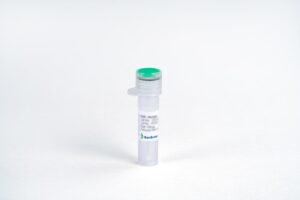
FGF-18, Human
$1,470.56 Add to cart View Product DetailsFibroblast Growth Factor-18 (FGF-18) is a heparin-binding growth factor that is a member of the FGF family. FGF-18 signals through FGFR 1c, 2c, 3c, and 4. FGF-18 plays an important role in the regulation of cell proliferation, cell differentiation and cell migration. FGF-18 is required for normal ossification and bone development. It can also stimulate hepatic and intestinal proliferation.
-

FGF-18, Mouse
$2,238.19 Add to cart View Product DetailsMurine FGF-18 is encoded by the FGF18 gene. By phylogenetic analysis and gene location analysis, FGF-18 is divided into FGF-8 subfamily which has three members FGF-8, FGF-17 and FGF-18. Using FGF knockout mice model, the numbers of this subfamily were testified that have crucial roles in embryo development. FGF-18–/– mice have decreased expression of osteogenic markers and delayed long-bone ossification. FGF-18 has been shown in vitro that this protein is able to induce neurite outgrowth in PC12 cells. In addition, it also has significant roles in lung development and has an anabolic effect on cartilage formation.
-

FGF-18, Rat
$1,470.56 Add to cart View Product DetailsFibroblast Growth Factor 18 (FGF-18) is a pleiotropic cytokine belonging to the heparin-binding FGF family, which has 23 different members. Structurally, FGF-18 is closely related to FGF-8 and FGF-17. Like other FGFs, FGF-18 can bind to different FGF receptors in vivo. FGF-18 is expressed in various tissues and has multiple functions: during long bone growth, FGF-18 is expressed in perichondrium and developing joints, and regulates bone formation by inhibiting chondrocyte proliferation and differentiation; FGF-18 knock-out mice survive embryonic development, but exhibit skeletal abnormalities and die in the early neonatal period. FGF-18 also induces ectopic cartilage formation in the lung, and alters the morphology of the pulmonary mesenchyma.
-

FGF-21, His, Human
$1,470.56 Add to cart View Product DetailsFGF-21, also known as fibroblast growth factor-21 and FGFL, is a secreted growth factor belonging to theheparin-binding growth factor family. It is produced by hepatocytes in response to fatty acid stimulation. FGF-21 couples with its co-factor beta-Klotho to signal through FGFR1c and FGFR4. Signal transduction results in insulin-independent uptake of glucose by adipocytes. Clinical administration of FGF-21 induces energy expenditure, fat utilization and lipid excretion.
-
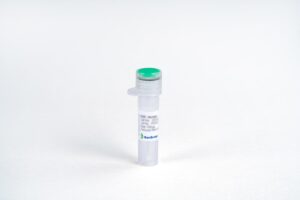
FGF-21, Human
$1,470.56 Add to cart View Product DetailsFibroblast Growth Factor-21 (FGF-21) is a metabolic cytokine belonging to the heparin-binding FGF family. Along with FGF-19/15 and FGF-23, FGF-21 is categorized as a member of the atypical FGF subfamily, as it must be complexed to the Klotho co-receptor in order to bind to the FGF receptors and activate the downstream signaling pathway. In vivo FGF-21 is expressed in liver, pancreas, adipose tissue, and skeletal muscle, and it plays a central role in the energy metabolism. The expression of FGF-21 is stimulated by free fatty acids and insulin resistant states and is correlated with whole-body insulin resistance. FGF-21 activates glucose uptake in adipocytes and increases insulin sensitivity, implicating it as a novel target with potential anti-diabetic properties.
-

FGF-21, Mouse
$1,470.56 Add to cart View Product DetailsFibroblast growth factor-21 (FGF21) belongs to the large FGF family which has at least 23 members. Along with FGF-19/15 and FGF-23, FGF-21 is categorized as a member of the atypical FGF subfamily, as it must be complexed to the Klotho co-receptor in order to bind to the FGF receptors and activate the downstream signaling pathway. FGF family members possess broad mitogenic and cell survival activities and are involved in a variety of biological processes including embryonic development, cell growth, morphogenesis, tissue repair, tumor growth and invasion.
-

FGF-6, Human
$1,470.56 Add to cart View Product DetailsFibroblast Growth Factor-6 (FGF-6) is a cytokine belonging to the heparin-binding FGF family, and is structurally related to other members of FGF family, particularly FGF-4. In vivo, FGF-6 exhibits an expression profile predominantly restricted tothe myogenic lineage, and it preferentially binds to two of the FGF receptors: FGFR1 and FGFR4. FGF-6 functions in muscle regeneration, myoblast proliferation and migration, and muscle differentiation in a dose-dependent manner. In vivo high concentration of recombinant FGF-6 up-regulates and down-regulates FGFR1 and FGFR4, respectively, as FGFR1 promotes the proliferation while FGFR4 promotes the differentiation in the muscle. Besides its dual function in muscle regeneration, FGF-6 may act as a regulator of bone metabolism as well.
-

FGF-8, Human
$1,470.56 Add to cart View Product DetailsFibroblast Growth Factor-8 (FGF-8) is a heparin-binding growth factor of the FGF family. There are 4 known forms of FGF8 produced by alternative splicing: FGF8a, FGF-8b, FGF-8e and FGF-8f. The human and mouse FGF8b are identical of aa sequences. FGF-8 plays an important role in the regulation of embryonic development, cell proliferation, cell differentiation and cell migration. FGF-8 is required for normal brain, eye, ear and limb development during embryogenesis. It is also required for normal development of the gonadotropin- releasing hormone (GnRH) neuronal system.






